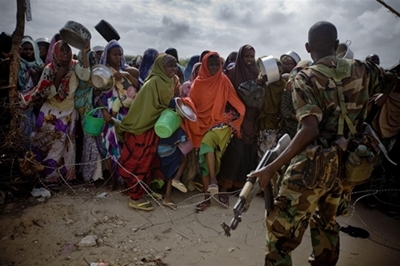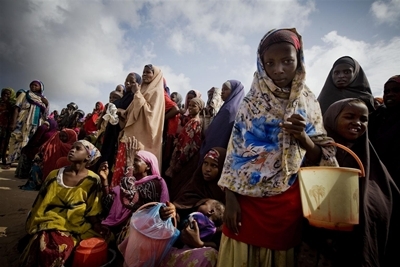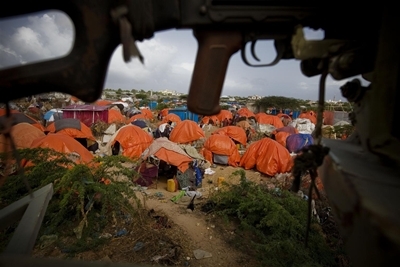UNICEF faces HK$1.6 billion shortfall in funds to support life-saving interventions for children and women in the Horn of Africa
2011-07-26
The Horn of Africa is facing a severe crisis due to the convergent effects of the worst droughts in decades, a sharp rise in food prices, and the persistent effects of armed conflict in Somalia, which has combined to trigger one of the sharpest refugee outflows in a decade to Kenya and Ethiopia. More than 10 million people are at high risk in Somalia, Ethiopia and Kenya.
 |
 |
The situation is most dire in Somalia. The number of acutely malnourished children across Somalia has risen from 476,000 in January to 780,000 with 82 per cent of all acutely malnourished in the south – where 640,000 children are acutely malnourished. Under 5 death rates are higher than 4/10,000 per day in all areas of the south where data is available, peaking at 13-20/10,000 per day in Lower Shabelle.
Over the next 2 months, UNICEF will expand blanket supplementary feeding in Somalia to reach 300,000 families including 360,000 children under 5 years, with the aim to further expand to 510,000 families over the next six months. UNICEF is also rapidly scaling up its interventions in the area of nutrition, water, sanitation and hygiene, child protection, education and health, including immunisation and other preventative interventions.
Furthermore, HK$9.36 million (US$1.2 million) in UNICEF emergency supplies has been dispatched from Ethiopia to the Somali region, while UNICEF Kenya has provided partners with HK$10.92 million (US$1.4 million) in supplies for children in camps and drought-affected pastoral areas.
UNICEF’s total requirements for the emergency response stand now at approximately HK$2.34 billion (US$300 million) through the end of 2011. Despite significant contributions from many governments and private donors through our National Committees, UNICEF still faces a shortfall for children and families of over HK$1.56 billion (US$200 million).
 |
 |
The humanitarian response must be flexible, targeted and reaching those in most immediate need or at the greatest risk as its first place. UNICEF is working closely with Governments, United Nations and NGO partners, to strengthen synergy, ensure a cohesive and more effective response, and to scale up operations to reach those in drought and famine affected areas with preventive assistance. As of yesterday, Hong Kong Committee for UNICEF has raised over HK$400,000 to support UNICEF’s emergency relief operations in the Horn of Africa.









